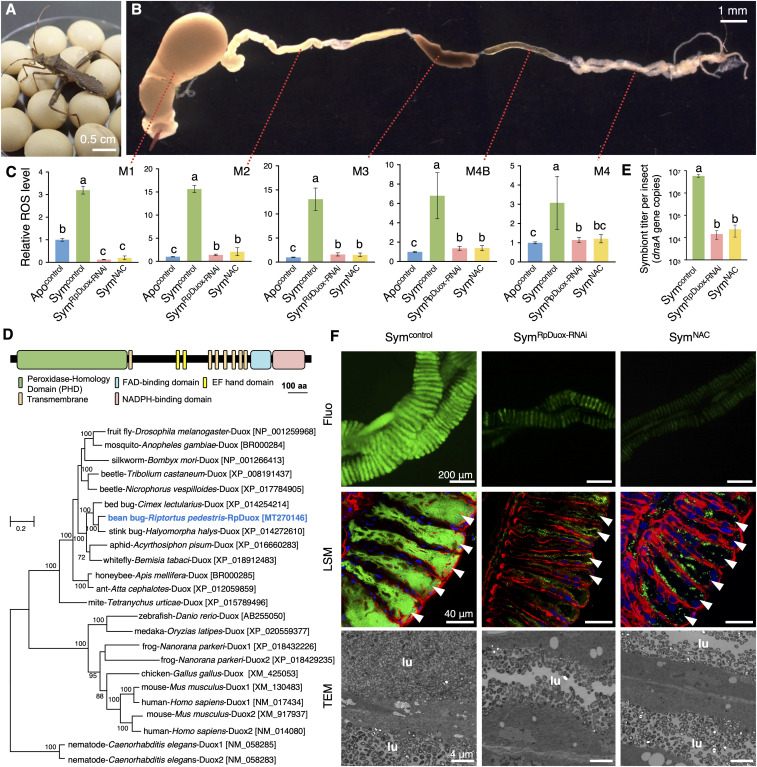Fig. 1.
RpDuox-mediated ROS is important for gut symbiosis. (A) An adult male R. pedestris feeding on soybeans. (B) The dissected midgut of R. pedestris. (C) Relative ROS level in the different midgut regions of Apo (Apocontrol), Sym (Symcontrol), RpDuox-RNAi (SymRpDuox-RNAi), and NAC-fed (SymNAC) insects. All values were normalized by the ROS level of Apo insects. (D) The predicted domains of the RpDuox protein (Top). Maximum-likelihood phylogeny based on amino acid sequences (Bottom). Numbers in parentheses indicate accession numbers. Bootstrap values (>60%) are shown near each node. (E) The number of symbionts colonizing the M4. Data shown in C and E are mean ± SD of n = 9 and n = 6 insects, respectively. Different letters indicate statistically significant differences (P < 0.05). The statistical significance of differences between samples was analyzed by a Kruskal–Wallis test with Bonferroni correction. (F) Microscopy images of the M4: epifluorescence microscopy (first row), laser scanning confocal microscopy (second row; green, symbionts; blue, host nuclei; red, host cytoskeleton; white arrowheads, midgut crypts), and transmission electron microscopy (third row; lu, luminal region of the midgut crypt).

